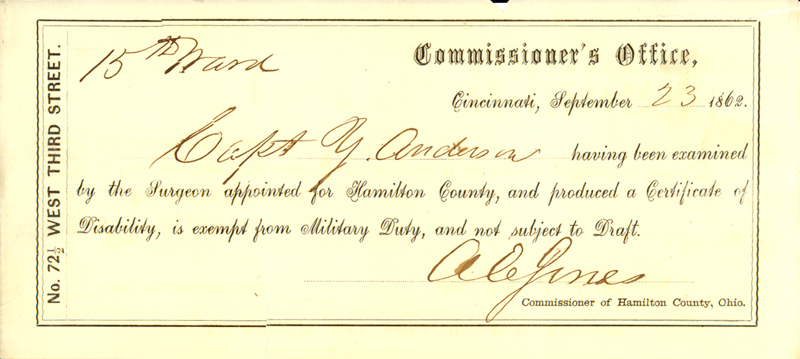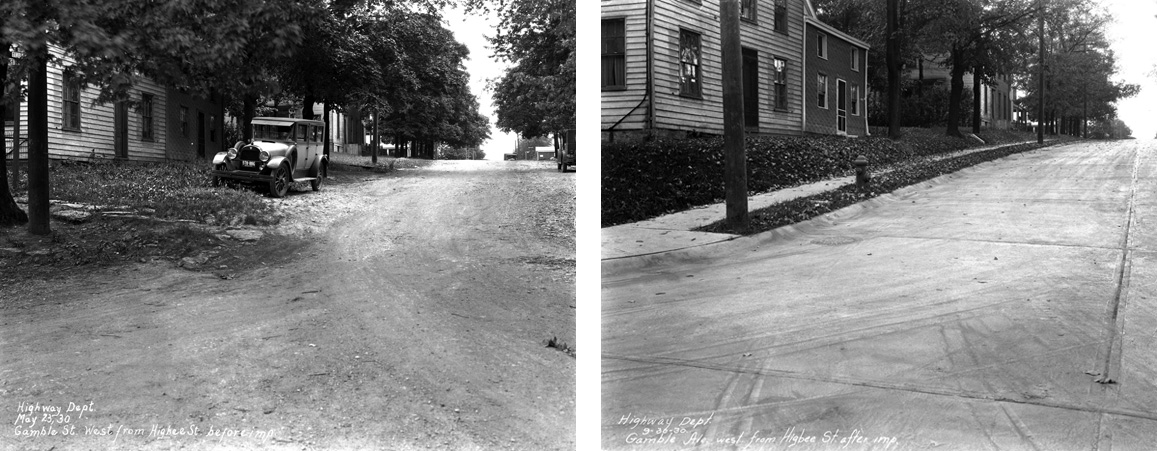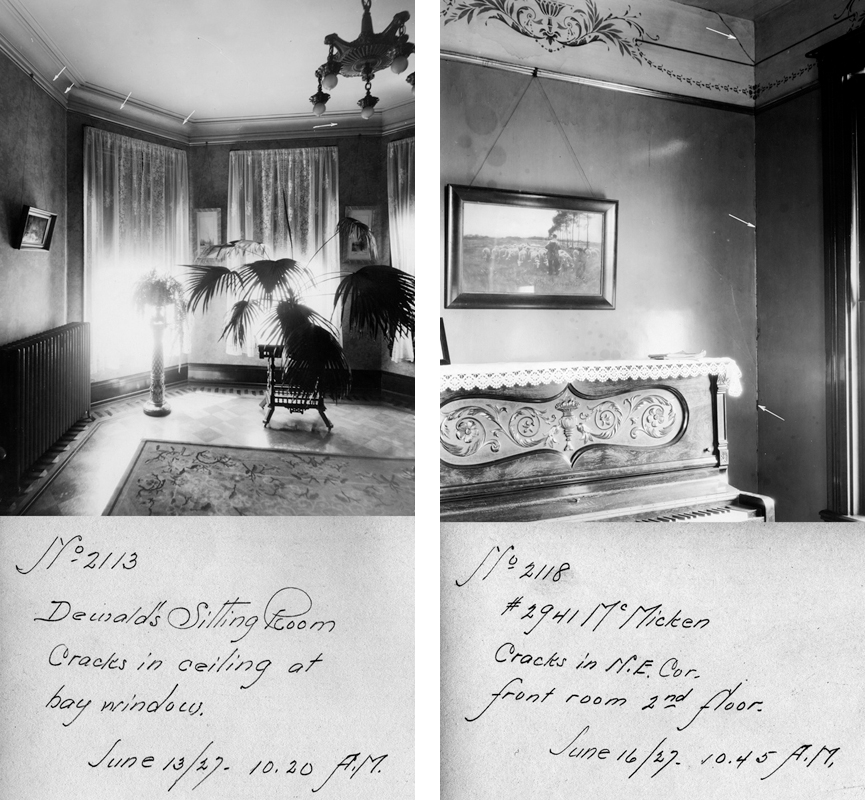In May of 2013, we received a UC Faculty Development Council Grant to run a series of five workshops in order to help us determine the best ways to use The Elliston Digital Audio Archive for instruction and research. The first of these lectures will take place on September 21, 2013 and will be led by Jerome McGann. This workshop will map the conceptual significance and possibilities of The Elliston Project and of digital audio archives more generally.
Category Archives: Digital Collections
Elliston Project Digital Archive Workshops
The audio archive of the Elliston Poetry Room is an astonishing set of recordings going back to the mid-1950s, housing recordings of visiting poets, especially those brought to UC as Elliston Poets in Residence. As all of these recordings were in the now relatively inaccessible format of audio cassettes, the English Department, partnering with the UC Libraries, began a digitization effort, ultimately creating an online archive of poetry readings and lectures.
In May of 2013, we received a UC Faculty Development Council Grant to run a series of five workshops in order to help us determine the best ways to use this digital audio archive for instruction and research.
Continue reading
Elliston Poetry Reading, September 6, 2013, Yona Harvey and Jamie Quatro
The next reading in the Elliston Poetry Room will be by poet Yona Harvey and author Jamie Quatro.
September 6, 2013, 4:00 PM, Elliston Poetry Room, 646 Langsam Library
Yona Harvey is the author of the poetry collection, Hemming the Water (Four Way Books, 2013).
Jamie Quatro’s debut story collection, I Want To Show You More (Grove), is a New York Times Editors’ Choice, NAIBA Bestseller, and Indie Next pick.
Look for recordings of this presentation soon in the digital collection, The Elliston Project: Poetry Readings and Lectures at the University of Cincinnati.
Learn More about Events sponsored by the Elliston Poetry Fund.
"Thirsty and Ye Gave Me Drink"-The Henry Probasco Fountains = Adventures in the Subway and Street Improvements Digitization Project
By: Angela Vanderbilt
A prominent figure in early Cincinnati history, Henry Probasco was both businessman and philanthropist, committing his time to numerous Cincinnati organizations and societies, accumulating a large personal library of rare books and manuscripts, as well as an extensive collection of prints and paintings, both rivaling the finest in the country, and dedicating two elaborate fountains to the citizens of Cincinnati in the late 1800s.
Henry Probasco, along with his business partner and brother-in-law, Tyler Davidson, managed one of the most successful hardware companies in Cincinnati in the 1800’s – Tyler Davidson & Company. Probasco joined the business in 1835 as a clerk, and in 1840 was made a partner. The same year, he married Davidson’s half-sister, Julia. Together with Davidson, Probasco succeeded in expanding the business quickly, and by 1846, Tyler Davidson & Company was the largest hardware store in Cincinnati. In 1851, at Probasco’s suggestion, the partners built a new, multi-level structure on the site of the original store at 140-142 Main Street, between Second and Third Streets, and within three years, their sales quadrupled. Pearl Street, Water Street and Front Street were also located in this area, and ran parallel with Second Street to the north and the river to the south. The hardware store, Second, Front, Water, and Pearl Streets no longer exist; all have been replaced with I-71, Fort Washington Way, the Great American Ball Park and Paul Brown Stadium, among other attractions along the riverfront.
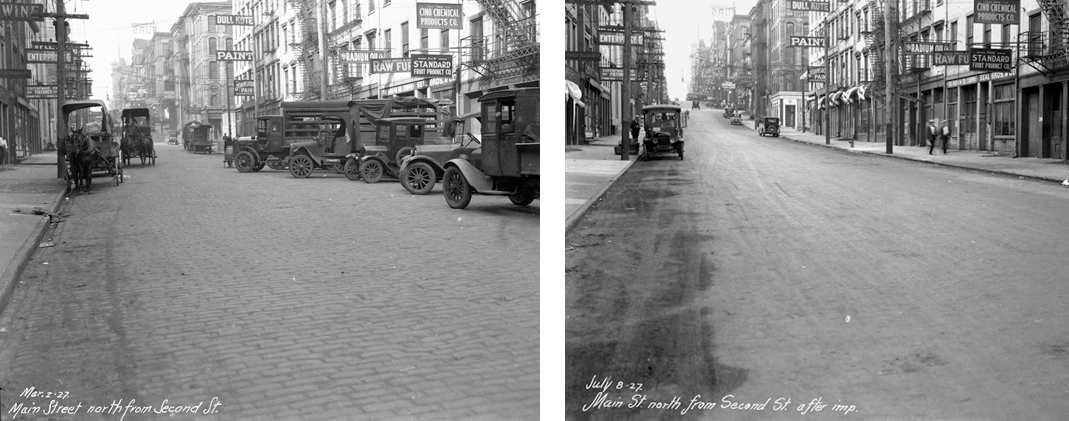
After Tyler Davidson passed away in 1865, Henry Probasco sold the hardware business to former partner, William Lowry, in 1866. The building would have been located on the east (right) side of Main Street between Second and Third Streets, in the vicinity of the images above (Left: March 2, 1927; Right: July 8, 1927.
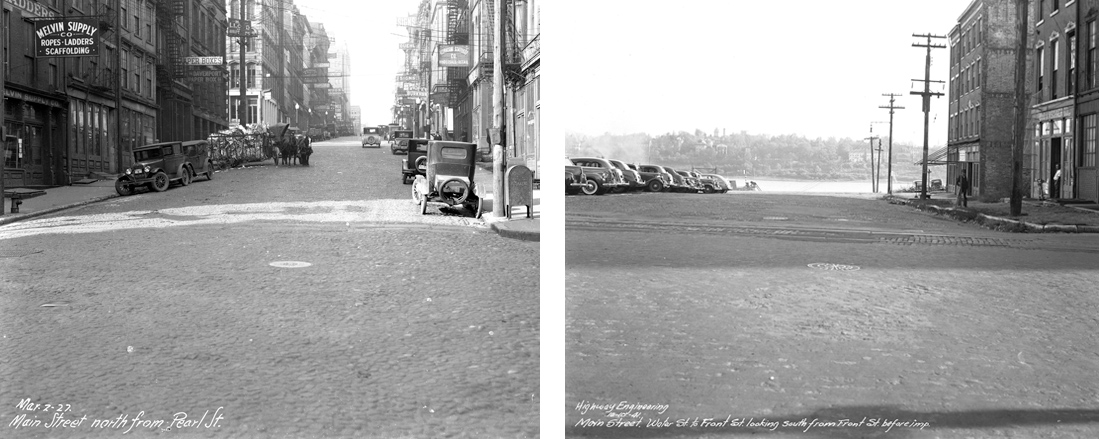
In the early history of Cincinnati, several streets were platted running parallel with the Ohio River, but which no longer exist. These were Pearl Street, Water Street, Front Street and Second Street. These have been replaced with Fort Washington Way, I-71, as well as museums, major league sports arenas and other businesses and attractions along the riverfront. (Left: March 2, 1927; Right: October 10, 1941)
Civil War Exemptions
By: Janice Schulz
The Archives and Rare Books Library’s collection of Hamilton County Civil War Exemptions is now available in digital format on the UC Libraries’ Digital Resource Commons. The collection consists of 102 documents dated from August-October, 1862, that can be searched, viewed, downloaded and printed. The documents in this collection were created as proof of exemption status under the Militia Act of 1862, which resulted in the first attempt to conscript Union soldiers in the Civil War. This collection represents a very small window in time during the long years of the Civil War, but it marks an important turning point in how the Union built its army.
The Albert B. Sabin Digitization Project: Spreading the Word
At the recent 2013 Society of American Archivists’ annual meeting in New Orleans, Louisiana, I presented a poster on the final results of the Albert B. Sabin digitization project. Several archivists stopped by to discuss the poster, particularly because they were curious about the way project staff handled documents that contained sensitive information. Many of those that stopped by were at archives in similar positions as the Winkler Center, trying to figure out the best way to balance privacy and access. Continue reading
Photographic Collections and Archive Repositories: A Balancing Act = Adventures in the Subway and Street Improvements Digitization Project
By: Angela Vanderbilt
The University of Cincinnati’s Archives and Rare Books Library (ARB) maintains numerous collections containing records of historic value for research and scholarly use. These materials are comprised of a variety formats, including printed documents, university records, sound recordings, and photographic prints and negatives.
One of these collections is the Ohio Network collection, comprised of historic local government and public records. The City of Cincinnati Engineer Records is part of this collection, and contains records produced by the engineer’s office from 1851 through 1957, including those of the Rapid Transit Commission for the subway and Central Parkway construction, as well as other street improvements carried out by the city within the same timeframe. And among these records are the negatives and photographic prints that are currently being digitized and that will be made available online via the ARB and Digital Collections web sites.
From Potter's Field to Union Terminal: The History of Lincoln Park = Adventures in the Subway and Street Improvements Digitization Project
By: Angela Vanderbilt
In my June 25 blog, “Ezzard Charles Drive: The Making of a Parkway,” I described how over time, many of the streets and locations captured in the Subway and Street Improvements images no longer exist, or have been altered in name or appearance, as they have been adapted for new uses. The area discussed in that blog is currently the site of the Cincinnati Museum Center, which occupies the former Union Terminal. Most residents of Cincinnati are familiar with the most current use of this building as well as its original purpose, a major railroad terminal by which passengers and freight from all over the United States passed through the Queen City. However, this area served two other purposes prior to the building of the terminal station, the first of which may surprise you. Continue reading
Cincinnati Street Names-A Who's Who of Cincinnati History = Adventures in the Subway and Street Improvements Digitization Project
By: Angela Vanderbilt
The subway and street improvements photograph collection is truly a wealth of historic information about the city of Cincinnati in the first half of the 20th century. As with most cities, many of the streets and avenues are named for the founders and prominent families who helped establish the city, as well as important statesmen such as presidents, governors and military heroes. Cincinnati has her fair share of these, with the city directories reading like a “Who’s Who” of Cincinnati’s political, cultural and economic development, with street names such as Ludlow, Symmes, and Patterson, St. Clair, Gamble and Ault, Anderson, Findlay and Wade, among others.
Home Interiors of the 1920s = Adventures in the Subway and Street Improvements Digitization Project
By: Angela Vanderbilt
Contained within the subway portion of the photograph collection are images of the interiors of homes along McMicken Avenue taken during the construction of the subway. Originally intended to serve as evidence for claims by homeowners of structural damage to the houses caused by blasting for the subway tunnels, the pictures now serve as a historic reference of domestic life during the 1920s.

